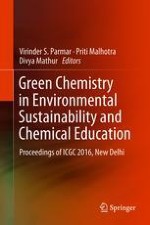2018 | OriginalPaper | Buchkapitel
In House Laboratory Method Validation and Uncertainty Determination of 28 Pesticides in Spinach by Gas Chromatography Using Electron Capture (ECD) and Mass Spectrometric (MS) Detector
verfasst von : Sudeep Mishra, Neelam Richhariya, Samsul Alam, Lalitesh K. Thakur
Erschienen in: Green Chemistry in Environmental Sustainability and Chemical Education
Verlag: Springer Singapore
Aktivieren Sie unsere intelligente Suche, um passende Fachinhalte oder Patente zu finden.
Wählen Sie Textabschnitte aus um mit Künstlicher Intelligenz passenden Patente zu finden. powered by
Markieren Sie Textabschnitte, um KI-gestützt weitere passende Inhalte zu finden. powered by
